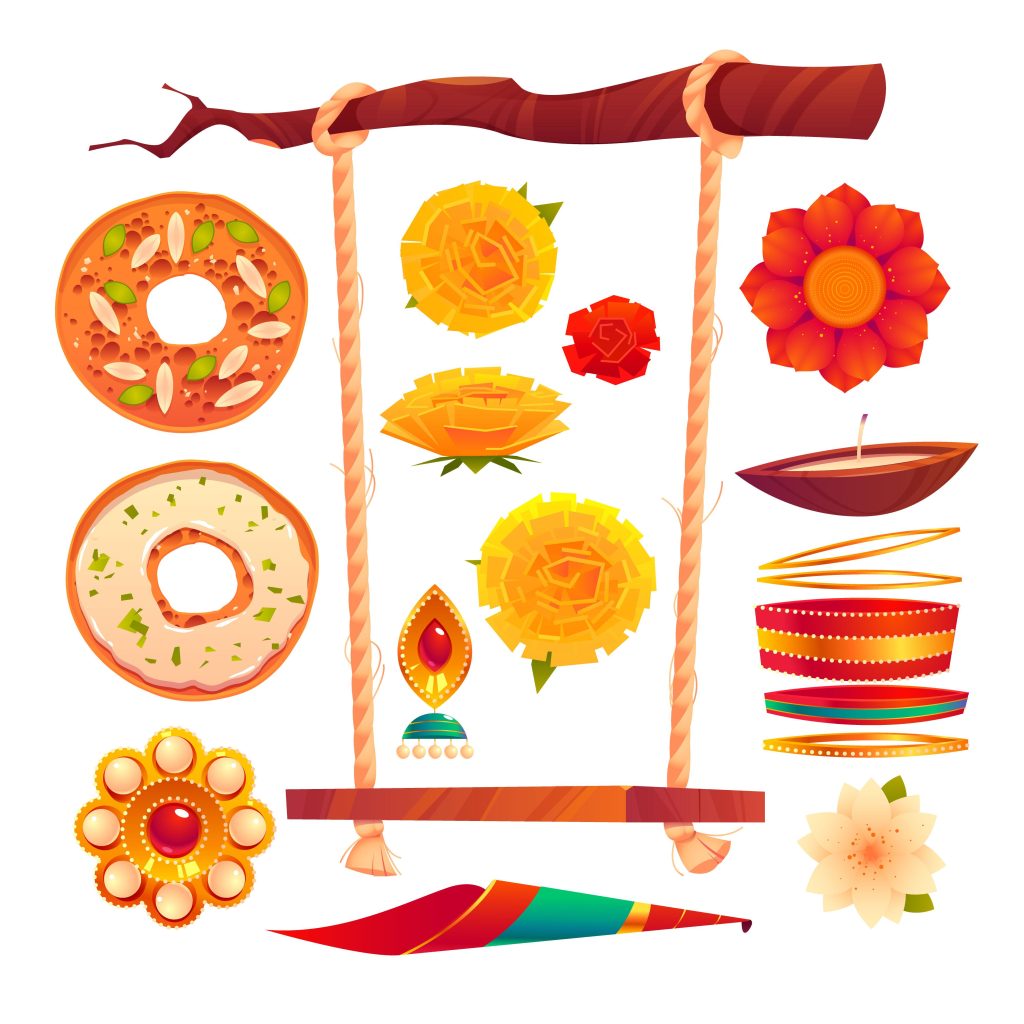Alangaram is the art of adorning deities with beautiful decorations, jewellery, clothing, and accessories during religious rituals, temple festivals, and special occasions. In many South Indian traditions, particularly in Hindu temples, Alangaram items play a central role in enhancing the divine beauty of the deity and creating an atmosphere of devotion. For beginners, understanding these items and their significance can be both fascinating and spiritually enriching.
What Are Alangaram Items?
Alangaram items refer to the various accessories, ornaments, and decorative elements used for deity decoration. These can include everything from traditional jewellery and crowns to silk garments, flower garlands, and sacred ornaments. Each item holds symbolic meaning, representing prosperity, beauty, and divine grace.
Common Types of Alangaram Items
1. Jewellery and Ornaments
Gold-plated ornaments, silver pieces, and gem-studded jewellery are some of the most important Alangaram items. These adornments include necklaces, waist belts (oddiyanam), anklets, earrings, and bangles designed especially for idols.
2. Crowns and Headpieces
Crowns (mukut or kiritam) are often richly designed and placed on the deity’s head to symbolise royalty and divinity. Some crowns are decorated with semi-precious stones, pearls, or gold plating.
3. Clothing and Fabrics
Silk sarees, dhotis, and ornamental drapes form a major part of Alangaram items. The colour and fabric often vary depending on the festival or special occasion.
4. Flower Garlands
Fresh flower garlands made from jasmine, roses, marigolds, and tulsi leaves add fragrance and charm. These garlands are intricately designed and often customised for the deity.
5. Sacred Symbols and Accessories
Items such as tilakam decorations, armlets, and special divine weapons (like the Sudarshana Chakra or trident) are part of Alangaram items used to depict the deity’s attributes.
Tips for Identifying Authentic Alangaram Items
- Material Quality – Genuine Alangaram items are made from high-quality metals, fabrics, or fresh flowers.
- Craftsmanship – Handcrafted designs are usually more detailed and authentic than mass-produced versions.
- Symbolic Relevance – Each item should match the deity’s iconography and traditional representations.
- Source – Buying from trusted temple suppliers or artisan communities ensures authenticity.
Cultural and Spiritual Significance
Using the right Alangaram items is not just about decoration—it’s a form of seva (service) to the divine. The beauty created through these adornments symbolises the devotee’s love, respect, and devotion. In temple rituals, elaborate alangaram is believed to invite divine blessings and bring joy to the devotees.
Final Thoughts
For beginners, exploring Alangaram items can open a new appreciation for cultural artistry, tradition, and devotion. Whether you are preparing for a temple festival, a household puja, or simply wish to learn, understanding these items will help you connect more deeply with the spiritual beauty they represent.




